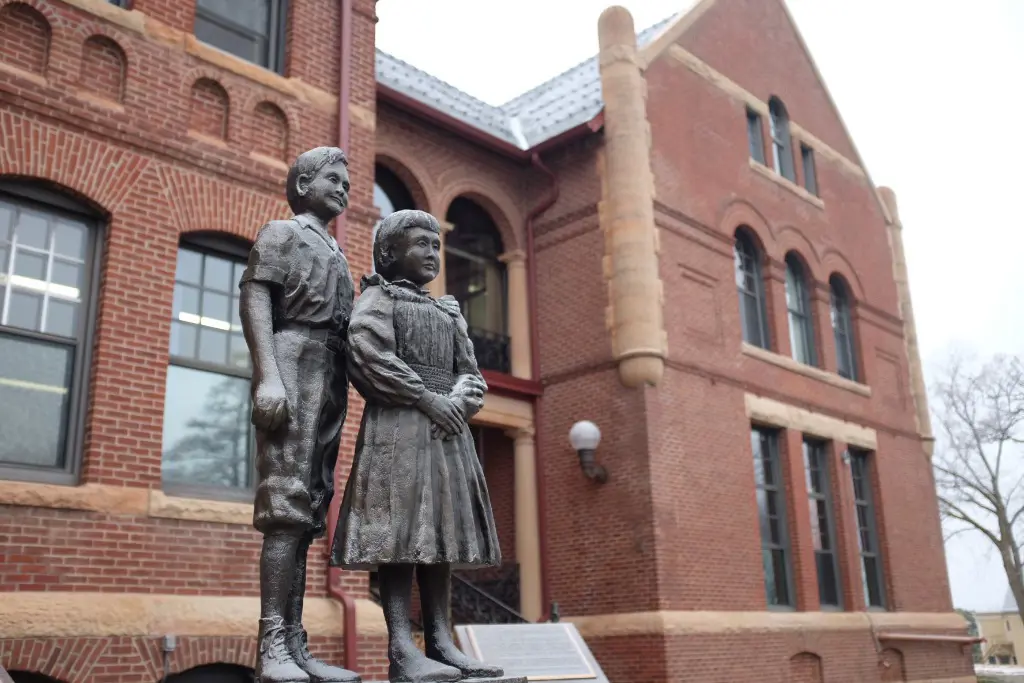West Hills: A Tale of Transformation and Community Legacy
Discover the poignant legacy of West Hills—a storied emblem of Owatonna, reflecting its transformative history from a refuge for vulnerable children to a dynamic community hub.

The story of West Hills in Owatonna is not merely a tale of architecture and landscapes, but a profound chronicle of human empathy, social reform, and historical remembrance—culminating in a beacon of community activity and memory. Situated at the heart of the community, the transformative journey of West Hills, from its initial establishment as the Minnesota State Public School for Dependent and Neglected Children in 1885, to its vibrant present as a social commons, encapsulates the city's engagement with its most vulnerable and reflects Owatonna's values of growth and inclusion.
The Compassionate Inception: Protecting Children Established by the Minnesota legislature in 1885, the school stood as a testament to the societal commitment to protect and nurture those in dire need. Spearheaded by influential figures like Governor Lucius F. Hubbard and Reverend Hastings H. Hart, the institution represented a pivotal movement towards progressive reform, providing a haven for children distinguishable from the grim conditions of poorhouses and jails that housed adult indigents and prisoners.
Cottage Life: Building a Family-Like Environment In this 'city on the hill,' cottages served as family units for the children, who benefited from onsite education and farm work. Whilst offering a sanctuary, its self-containment underscored a paradox—some children found themselves lingering in institutional life far beyond intended temporary stays, indicating early societal grappling with the child welfare system.
A Legacy of Change: Adaptation Over Decades With the mid-20th-century shift favoring foster care, the school closed in 1945 and evolved alongside societal needs, transforming to serve various community purposes, including caring for children with developmental disabilities until 1970.
However, West Hills' role in the community would again pivot—post-1974, the city of Owatonna repurposed the site as its administrative nerve center, ensuring the legacy and structures continued to serve public good.
Current-Day Cultural Epicenter: West Hills Social Commons The Owatonna Parks and Recreation Department today operates the West Hills Social Commons—a centerpiece for adults over 50 to engage in enrichment and leisure activities. The mission embodies a commitment to empower seniors and enhance their quality of life, mirroring the compassionate ethos upon which West Hills was founded.
Preserving Memories: The Minnesota State Public School Orphanage Museum Further underlining West Hills’ significance, The Minnesota State Public School Orphanage Museum, an outcome of relentless work by Harvey Ronglien and his wife Maxine, immortalizes the experiences of the former wards.
Educational exhibitions and the somber children's cemetery grant visitors a poignant insight into the impactful narratives of resilience—underscoring the necessity of recording and honoring our collective history.
Conclusion: A Living Monument of Community Spirit West Hills represents a living tapestry of memories, evolving needs, and communal spirit. It is where the echoes of a compassionate past meet the dynamic pulse of present-day community engagement—a celebration of Owatonna's continuous dialogue with its history and the enduring human spirit that propels transformation through time.

Randy Thompson
Randy Thompson is a generative journalist specializing in local news coverage.


